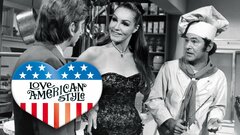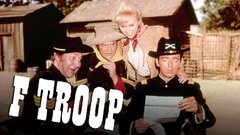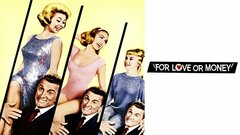Though she earned a Tony for a turn on Broadway in 1961's "The Marriage-Go-Round," actress Julie Newmar's career was largely defined by her recurring role as the slinky Catwoman on the iconic 1960s cult series, "Batman" (ABC, 1966-68). Prior to her appearances in the role, she had been a staple of Hollywood musicals and stage productions, including "Li'l Abner" (1959), but her seductive turn as Catwoman - and, most notably, her form-fitting suit, which she designed herself - made her the object of many young male viewer's ardor. Newmar never quite achieved the same degree of fame after "Batman," though she did become a savvy real estate investor in the 1980s. However, Catwoman remained her bread and butter well into her later years, a position that she appeared to embrace whole-heartedly.
Born Julia Chalene Newmeyer in Los Angeles on Aug. 16, 1933 she was the eldest of three children by Don Newmayer, a former professional football player for the Los Angeles Buccaneers in the 1920s and later the head of the Physical Education Department at Los Angeles City College, and his wife, Helen. From an early age, Newmar took after her mother's former profession - a dancer for the Ziegfield Follies - and studied dance and classical ballet as well as piano. She graduated from high school at the age of 15 and traveled throughout Europe with her family before returning to the United States. Once back home, she studied piano, philosophy and French at UCLA while performing ballet with the Los Angeles Opera.
In 1952, Newmar made her screen debut as a chorus girl in the lightweight musical "She's Working Her Way Through College." It led to a string of mostly uncredited turns as a dancer in features, including the Fred Astaire musical "The Band Wagon" (1953). Tall and statuesque in build, she was frequently cast for her physical attributes in addition to her dancing skills, as evidenced by her turn in full body gold paint for "Serpent of the Nile" (1953). After earning her first billed screen credit as one of the "Seven Brides for Seven Brothers" (1954), Newmar lit out for New York to try her hand on Broadway, where she made her debut in 1955's "Silk Stockings" opposite Don Ameche. The following year, she won acclaim as the aptly named Stupefyin' Jones in "Li'l Abner," which, along with numerous pin-ups and magazine layouts, helped to cement her status as one of the decade's most admired sex symbols.
Newmar returned to Hollywood in 1957, where she reprised her turn as Stupefyin' Jones in the film version of "Li'l Abner" (1959) while making various television appearances, most of which could be categorized by her turn as "Stacked" Suzie on "The Phil Silvers Show" (CBS, 1955-59). In 1961, she made a triumphant return to Broadway as a sexually supercharged exchange student in "The Marriage-Go-Round," which earned her a Tony for Featured Dramatic Actress. That same year, she reprised her role in the film version of the play, which starred James Mason and Susan Hayward. Television soon beckoned, and she became a regular on episodic series, most notably as a devilish temptress (named Miss Devlin, no less) who offered Albert Salmi a chance to relive his past in "Of Late I Think of Cliffordville," a 1963 episode of "The Twilight Zone" (CBS, 1959-1964). The following year, she won her first series lead in "My Living Doll" (CBS, 1964), which cast her as a female android who was instructed in how to be a proper woman by her caretaker (Bob Cummings). Most of his suggestions hinged on domestic duties like cooking and cleaning, which branded the series as one of the most sexist projects ever released on television, and helped to spell its quick demise.
In 1966, she was approached by the producers of "Batman" to play one of the Caped Crusader's most enduring enemies, Catwoman. However, Newmar had never heard of the character, and only took the role at the urging of her brother, future epidemiologist John Newmeyer, Ph.
D, who was a fan of the series. Newmar designed her own Catwoman costume, a form-fitting bodysuit that emphasized her hourglass figure by placing the belt around her hips instead of her waist. The suit eventually found its way to the permanent collection at the Smithsonian Institute. Newmar soon became one of the most popular villainesses on "Batman," and her appearances, which were charged with sexual tension between her and star Adam West, soon became favorites of the show's predominately male viewership. Newmar was soon in demand for stage and television appearances, many of which prevented her from meeting the show's production demands. She was subsequently replaced by actress Lee Merriweather in the 1966 "Batman" feature film, and later by actress-singer Eartha Kitt in the show's third and final season.
Despite the popularity of "Batman," the show did little to advance Newmar's career. She maintained a steady schedule of television appearances, including an appearance as a pregnant alien princess in "Friday's Child," a 1967 episode of "Star Trek" (NBC, 1966-69) that endeared her to an entirely different but no less dedicated fan base. There were occasional film roles, like Omar Sharif's feisty Native American lover in the cult Western "Mackenna's Gold" (1969), but for the most part, she remained a staple of episodic television, playing the same seductive roles she had landed a decade prior. She also returned to the stage on numerous occasions, most notably opposite Joel Grey in the national tour of "Stop the World - I Want to Get Off." In 1968, she appeared in a pictorial layout for Playboy, much to the delight of her considerable male fanbase.
In the 1970s, Newmar stepped into entrepreneurship, designing her own line of pantyhose and brassieres that emphasized women's curves. She later returned to UCLA to study real estate, and became a major investor in Los Angeles properties, most notably in the areas near Melrose and Fairfax avenues. She was later credited as one of the primary forces that helped to elevate that area to one of the prime neighborhoods and retail locations in the city. The following decade saw Newmar working frequently in episodic television, as well as numerous low-budget features, including the crude science fiction film "Evils of the Night" (1985) opposite another sexy TV icon, Tina Louise, and John Derek's head-spinning "Ghosts Can't Do It" (1990). Despite the questionable quality of these efforts, her fanbase remained remarkably strong, and Newmar earned new champions in fashion designer Thierry Mugler, whose own work drew inspiration from her Catwoman suit. He later made her one of his regular runway models in the 1990s, and directed her in the music video for George Michael's "Too Funky" (1992). She was also feted by the 1995 feature "To Wong Foo, Thanks for Everything! Julie Newmar," which starred Patrick Swayze, Wesley Snipes and John Leguizamo as drag queens on a road trip to Los Angeles who are inspired by an autographed photo of the actress that bore the film's title. Newmar also appeared as herself in a cameo at the picture's conclusion.
Convention appearances and her real estate investments kept Newmar busy well into the new millennium, though she earned headlines of a different sort in 2004 when she was engaged in a hostile battle with her neighbor, actor James Belushi, over the level of noise produced by his air conditioner. Belushi responded with a $4 million lawsuit that alleged defamation of character, but eventually settled the dispute in an amicable fashion. He later poked fun at the situation in an episode of his television series, "According to Jim" (ABC, 2001-09), and invited Newmar to appear in a thinly disguised version of herself.

















































































